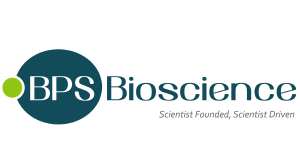NF-κB Luciferase-eGFP Reporter HEK293 Cell Line
NF-κB Luciferase-eGFP Reporter HEK293 Cell Line
Artikelnummer
BPS82389
Verpackungseinheit
2 vials
Hersteller
BPS Bioscience
Verfügbarkeit:
wird geladen...
Preis wird geladen...
Products from BPS Bioscience require a minimum order value above 400€
Application: Monitor NF-κB activity.Screen or characterize compound activity on the NF-κB signaling pathway.
Background: The role of NFκB (nuclear factor kappa-light chain enhancer of activated B cells) is well-characterized in canonical (classical) and noncanonical (alternative) signaling pathways of inflammation. Two major forms of innate immune sensors are Toll-like receptors (TLR) and NOD/CATERPILLER proteins. Mutations in NOD2 (nucleotide-binding oligomerization domain-containing protein 2) have been linked to chronic autoinflammatory and autoimmune diseases, such as Crohn's disease and Blaus syndrome. Studying the canonical and noncanonical NF-κB pathways and the influence of TLR pathways and NOD2 mutations can further our understanding of autoimmune regulation. The use of luciferase and eGFP (enhanced green fluorescence protein) reporter allows for easy read outs in cellular assays.
Description: NF-κB Luciferase-eGFP Reporter HEK293 Cell Line is a HEK293 cell line designed to monitor nuclear factor Kappa B (NF-κB) activity. It contains a firefly luciferase-eGFP (enhanced green fluorescent protein) reporter driven by multiple copies of the NF-κB response element located upstream of the minimal TATA promoter. After activation by pro-inflammatory cytokines or agonists of the lymphokine receptors, endogenous NF-κB transcription factors bind to the DNA response elements, inducing transcription of the luciferase-eGFP reporter.The cell line has been functionally validated in response to human TNF-α.
Host Cell Line: HEK293, epithelial-like cells, adherent
Mycoplasma Testing: The cell line has been screened to confirm the absence of Mycoplasma species.
Storage Stability: Store in liquid nitrogen immediately upon receipt.
Supplied As: Each vial contains >1 x 106 cells in 1 ml of Cell Freezing Medium (BPS Bioscience #79796)
Warnings: Avoid freeze/thaw cycles.
Biosafety Level: BSL-2
References: Pessara U. and Koch N., 1990 Mol Cell Biol. 10(8): 4146-4154.Baeuerle P.A., 1998 Curr Biol. 8(1): R19-R22.Takada Y., et al., 2005 J Biol Chem. 280(17): 17203-17212.
Application: Monitor NF-κB activity.Screen or characterize compound activity on the NF-κB signaling pathway.
Background: The role of NFκB (nuclear factor kappa-light chain enhancer of activated B cells) is well-characterized in canonical (classical) and noncanonical (alternative) signaling pathways of inflammation. Two major forms of innate immune sensors are Toll-like receptors (TLR) and NOD/CATERPILLER proteins. Mutations in NOD2 (nucleotide-binding oligomerization domain-containing protein 2) have been linked to chronic autoinflammatory and autoimmune diseases, such as Crohn's disease and Blaus syndrome. Studying the canonical and noncanonical NF-κB pathways and the influence of TLR pathways and NOD2 mutations can further our understanding of autoimmune regulation. The use of luciferase and eGFP (enhanced green fluorescence protein) reporter allows for easy read outs in cellular assays.
Description: NF-κB Luciferase-eGFP Reporter HEK293 Cell Line is a HEK293 cell line designed to monitor nuclear factor Kappa B (NF-κB) activity. It contains a firefly luciferase-eGFP (enhanced green fluorescent protein) reporter driven by multiple copies of the NF-κB response element located upstream of the minimal TATA promoter. After activation by pro-inflammatory cytokines or agonists of the lymphokine receptors, endogenous NF-κB transcription factors bind to the DNA response elements, inducing transcription of the luciferase-eGFP reporter.The cell line has been functionally validated in response to human TNF-α.
Host Cell Line: HEK293, epithelial-like cells, adherent
Mycoplasma Testing: The cell line has been screened to confirm the absence of Mycoplasma species.
Storage Stability: Store in liquid nitrogen immediately upon receipt.
Supplied As: Each vial contains >1 x 106 cells in 1 ml of Cell Freezing Medium (BPS Bioscience #79796)
Warnings: Avoid freeze/thaw cycles.
Biosafety Level: BSL-2
References: Pessara U. and Koch N., 1990 Mol Cell Biol. 10(8): 4146-4154.Baeuerle P.A., 1998 Curr Biol. 8(1): R19-R22.Takada Y., et al., 2005 J Biol Chem. 280(17): 17203-17212.
| Artikelnummer | BPS82389 |
|---|---|
| Hersteller | BPS Bioscience |
| Hersteller Artikelnummer | 82389 |
| Verpackungseinheit | 2 vials |
| Mengeneinheit | PAK |
| Produktinformation (PDF) | Download |
| MSDS (PDF) |
|

 English
English






